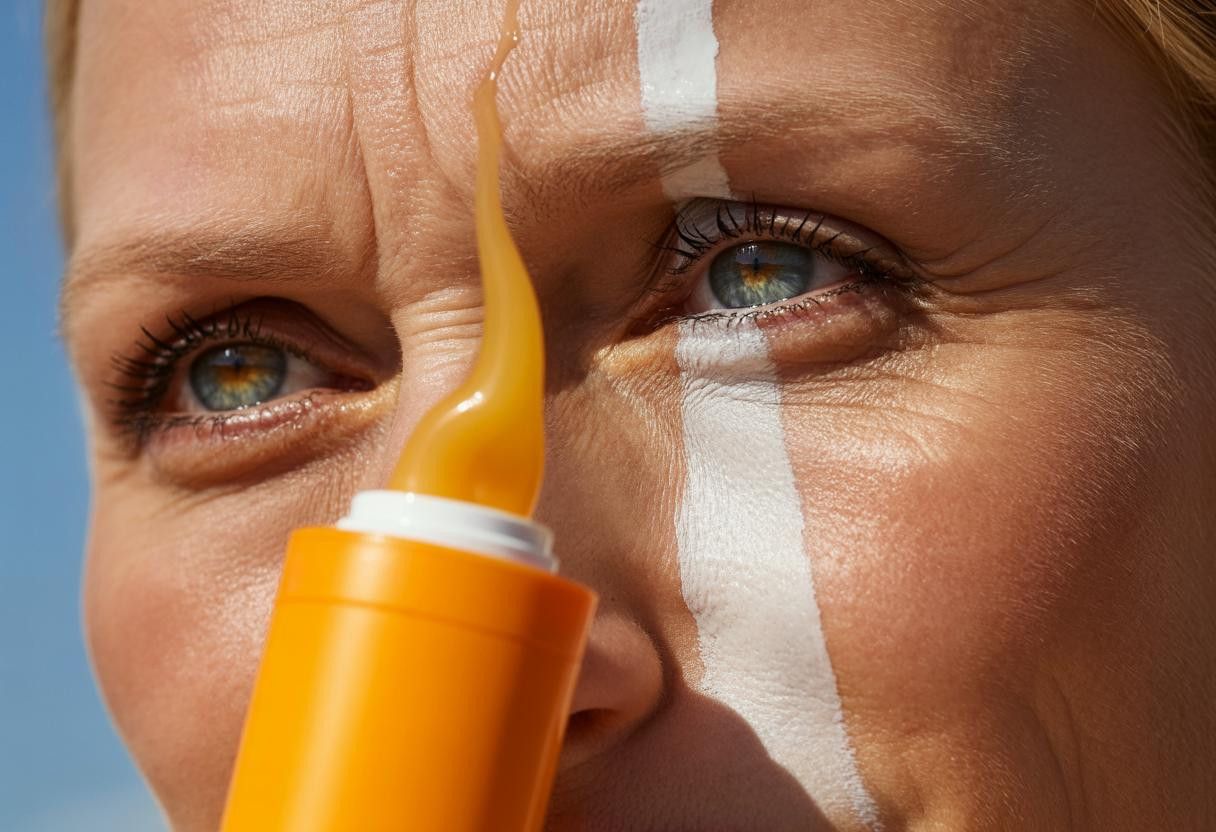The seemingly innocent daily ritual of applying sunscreen stick around your eyes might be creating the very wrinkles you’re trying to prevent. While sunscreen is universally praised for protecting against photoaging, emerging evidence suggests that the mechanical application process itself could be contributing to premature crow’s feet formation through repetitive friction and pressure on delicate periorbital skin.
This revelation challenges the conventional wisdom that all sunscreen application methods are equally beneficial for anti-aging purposes, particularly around the eye area where skin is 40% thinner than other facial regions.
The hidden mechanics of sunscreen stick application
Recent application studies reveal that achieving adequate SPF coverage with sunscreen sticks requires four or more back-and-forth passes over the same area. This repetitive motion creates mechanical stress patterns that may accelerate micro-damage to the delicate collagen network surrounding the eyes.
Unlike liquid formulations that spread easily, sticks demand physical pressure and multiple strokes to achieve even coverage. Each application session subjects the periorbital area to friction forces that can stretch and strain the underlying dermal structure, potentially contributing to the formation of expression lines over time.
The pressure gradients created during circular application motions around the eye area may disproportionately affect areas where crow’s feet typically develop, creating cumulative micro-trauma that accelerates visible aging signs.
Formulation factors that matter
The biochemical composition of sunscreen sticks plays a crucial role in their potential impact on skin aging. Mineral-based formulations containing zinc oxide create physical barriers on the skin surface, requiring more mechanical manipulation during application compared to chemical sunscreens that absorb more readily.
Some stick formulations contain alcohol-based solvents or drying agents that can compromise skin elasticity over time. These ingredients may create a paradoxical effect where the protective benefits are offset by reduced skin resilience and increased susceptibility to mechanical damage during application.
However, advanced formulations now include protective ingredients like ectoin and bisabolol, which offer antioxidant properties that may help mitigate some of the mechanical stress effects. The key lies in understanding how these dermatologist-approved treatments for aging skin interact with daily application routines.
Understanding the physiological impact on aging
The relationship between mechanical stress and collagen breakdown extends beyond surface-level concerns. Repeated tugging and pressure during stick application may activate inflammatory pathways that upregulate matrix metalloproteinases – enzymes responsible for breaking down collagen and elastin fibers.
This process becomes particularly relevant for individuals over 30, when natural collagen production begins declining by 1% annually. The additional mechanical stress from daily stick application could accelerate this natural aging process, making proper technique essential for maintaining eye area makeup techniques for mature skin and overall periorbital health.
Chronic oxidative stress from improper application techniques may also interfere with natural skin repair mechanisms, similar to how prolonged stress affects overall skin health through stress-reduction techniques that protect skin health and cellular regeneration processes.
Optimizing application technique for protection without damage
Gentle application strategies
Transform your sunscreen stick routine by using light, tapping motions instead of dragging strokes. Warm the stick slightly by pressing it against the back of your hand for 3-5 seconds before application to soften the formula and reduce required pressure.
Apply the product in thin layers, building coverage gradually rather than attempting to achieve full protection in a single application. This approach reduces mechanical stress while maintaining effective UV protection.
Smart product selection
Choose sticks with soothing ingredients like sunflower oil or ceramides that provide slip during application. Avoid formulations with high alcohol content or strong fragrances that may cause irritation and require additional rubbing to blend properly.
Consider alternating between stick and liquid formulations, using sticks for touch-ups and convenience while relying on gentler cream formulas for daily base application around the delicate eye area.
Protecting your investment in youthful skin
The solution isn’t abandoning sunscreen sticks entirely, but rather applying them intelligently to maximize protection while minimizing mechanical damage. By understanding the relationship between application technique and long-term skin health, you can maintain effective sun protection without inadvertently accelerating the aging process you’re working to prevent.
